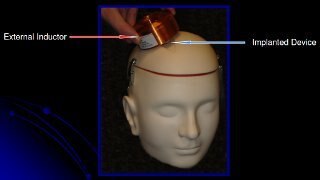A wireless medical pressure transducer that Dr. Joshua Medow first prototyped in his home lab a few years ago is now being tested in sheep and could be tested in human patients within two years.
The device is intended for patients with hydrocephalus who have a shunt implanted to reduce cerebrospinal fluid pressure. When these patients have symptoms as simple as a headache, there is no easy test to determine if a failure of the shunt is responsible.
Dr. Medow had an idea of implanting a pressure sensor in the brain and transmitting the data to a receiver outside the body. He was knowledgeable about electronics, so he built a proof of concept using through-mount parts on a breadboard.
The receiver provided power to the transmitter inductively by applying 60Hz AC to a coil. The transmitter used a bridge rectifier and a linear to generate 15V DC. He used this voltage to excite a strain gauge and to power an op-amp circuit and a voltage-to-frequency converter. The output of the frequency converter was a function of the strain gauge deflection and was in the 800Hz range. He did all of this with very old-school parts such as LM7815CTLM7815CT, LM324, LM331. These are all parts I used frequently in the 90s when I started doing electronics, and they were already twenty years old at that time.
This simple proof of concept led to prototypes that integrate all the circuitry in one piece of custom silicon and use MEMS to measure pressure. The new pressure monitor transmits at at a higher frequency and uses the same antenna to transmit its data and receive power.
It would have been easy for Medow to dismiss the project when he conceived it because he didn’t have the resources to create custom silicon. Instead he built a prototype. That led to a collaboration with engineers at the University of Wisconsin to produce a more advanced prototype. Last fall, three years after the early prototype he was featured on the front page of the Wisconsin State Journal. Now the technology is being tested in animals and is a few years away from human trials.

